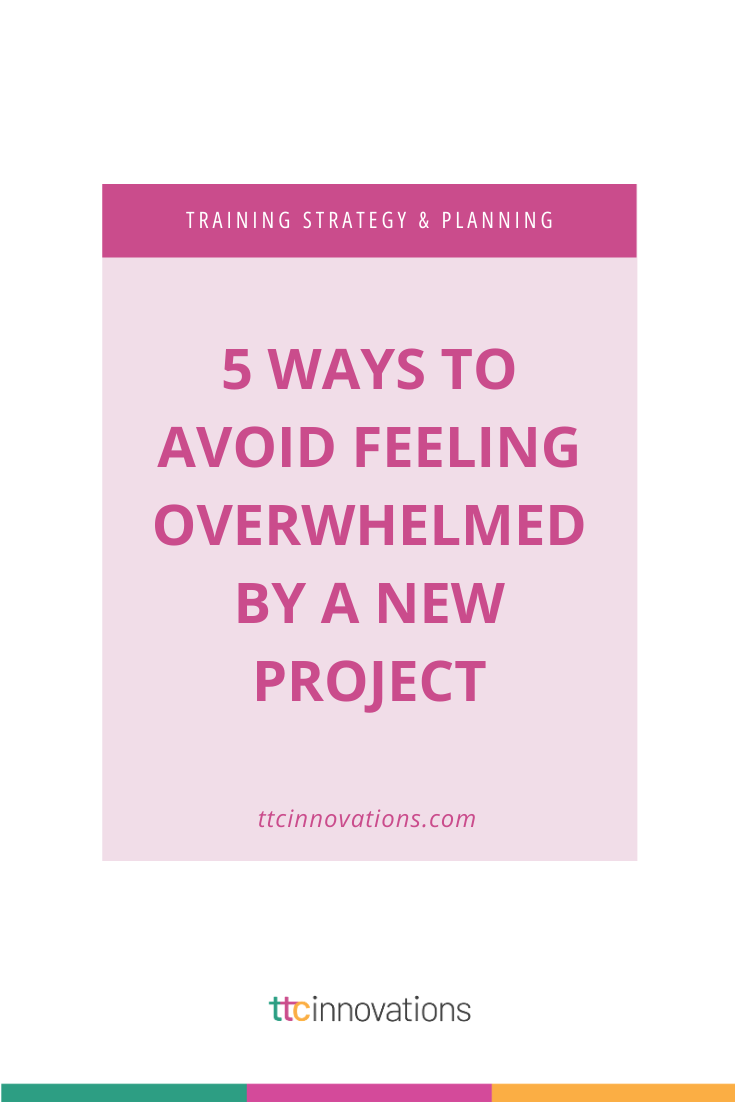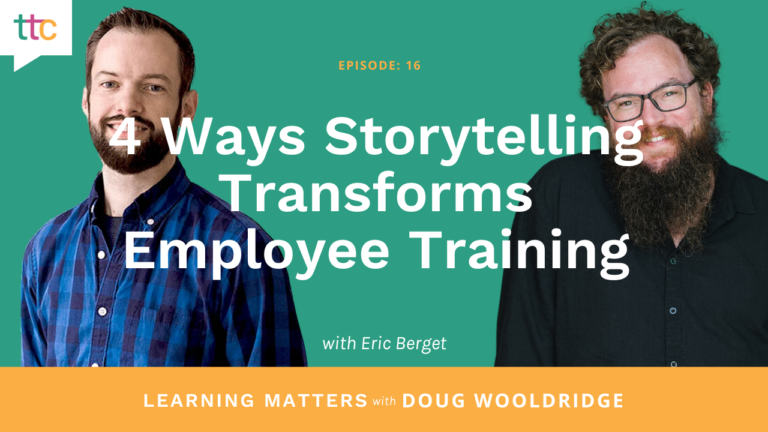We’ve all had that moment where we’re faced with an insurmountable learning and development project. You know, the one that feels like you should’ve studied rocket science or that you need to clone yourself to get all the work done by the deadline. I’ve been working on a project like this for a while and now that I’ve reached the end of the road, I thought it would be a good time to share some ways to tackle projects that either have mountains of content or are incredibly complex. I’ve also enlisted some of my fellow IDs to share their ideas and thoughts, so read on if you want to see how we approach these super challenging projects.
1. Jump in with both feet!
I can’t stress this enough and my colleague, Jennifer Graves, agrees too. You’ve got to jump right in and get started. When I asked her how she gets started on a challenging project, here’s how she put it: “Start fast! The same day, if possible. If you delay or procrastinate, it only grows as a mountain in your mind. Even doing a small amount will take away anxiety and get you in the groove.”
I couldn’t have said it better myself. Challenging content and projects often mean you’re going to have to put in more time upfront to get a better result in the long run. Move fast, because if you start behind, it’s almost impossible to catch up. Delays can create downstream impacts on a large, challenging project that can push the whole project off the track.
2. Take a breather.
When you’re sorting through endless amounts of content and trying to find a pattern or thread to connect it all together, it’s easy to get stuck and “fall down the rabbit hole” (as Jennifer put it).
If you’re endlessly toiling away and making no progress, this is when you must stop and take a breather. Literally, get up and walk away. Avoid the project overwhelm!
Fellow ID, Tim Elliot. knows from experience that a breather is sometimes necessary. As he put it, “I also sometimes just walk away from development for a bit. Could be an hour, could be for the day if time permits. What I may be struggling with will come to me in a clearer head (sometimes as I drift off to sleep, I have an epiphany!).”
Another colleague, Nancy Giard, pulled from her time studying art. Here’s an approach she suggests:
“When I studied art (my first major in college) they talked to us about ‘the power of the blank page’. It can be daunting to stare at a blank slate and let your mind wander. I’ve learned it’s best to just get started with something – anything – and go for a bit, then go back and react to what you’ve done. Even if you end up removing entire parts, the act of getting started gets the momentum going and breaks the power of the blank page.”
If those ideas aren’t working for you, keep on reading.
3. Call in reinforcements.
I’ve seen far too many IDs try to go it alone. Instead, when you’re overwhelmed, engage your SMEs, project team members and peers. A different perspective can be just the jump start you need. In fact, that’s what I did in writing this blog post – I reached out to my peers for their perspectives because we all approach challenging situations differently, and I wanted more than just one perspective on how to get through tough times.
“I’ll bounce ideas off of other IDs or at the least, not be afraid to ask a ‘dumb’ question to a teammate I trust.” — Tim E.
He also pointed out that while it definitely helps to leverage others, “I do reel myself in…by not comparing my thought process in development to those of other IDs. I feel a person can really get in their own heads by trying to say, ‘Oh, I need to do what Jane/John did when they wrote their first draft!’ That can mess you up and really cause you to stop, panic and not let yourself do what you already know how to do!”

One FREE Week!
New clients, tap into our talent with one week of Innovators on Demand® on us.
Get started with one of our skilled Innovators.
4. Chunk it.
We’re all familiar with the concept of chunking as a part of any training strategy. This approach also works when you’re writing it too. Use a time management approach here — I like the Pomodoro approach. If you’ve never heard of it, this link is worth reviewing. Essentially, you block your time into 25-minute segments and make a point to sit in your chair and work through pieces of the content during that time. It’s a small commitment that can lead to big rewards later.
My colleague, Vicki, suggests this approach when there’s an initial design completed:
“Build the ‘shell’. Create all the headers, place the knowledge checks, etc. Get it ready for the content. Not only do you get the shell built, but it reinforces the structure in your mind.
Once you have the shell, you don’t have to start at the beginning, you can start in the middle! We often want to start at the beginning and go through in a linear fashion. However, if you start by writing the parts you know, it’s like getting a jumpstart. So, start filling in the content you have. Don’t worry about making it perfect – just start. Once you are writing, you realize how other parts of the lesson fit together and can begin to see the structure. Make all the notes you do have in the document and note where you are missing things… it will all come together.”
5. Embrace the discomfort.
This is all about digging deep and channeling your inner motivation to keep going and moving forward until you’ve mastered this mountain of content or a never-ending project. This is how I personally move forward on some of my most challenging projects. I ask myself questions like:
- What can I learn from this experience?
- How can I be a better ID?
- How can I build better relationships with folks to get what I need?
In my last challenging project, I focused on building my assertiveness and that has been immensely helpful in other areas of my life, both professionally and personally.
What ends up happening when you embrace the discomfort and start to ask what you can learn from it, instead of what can it take away from you – it really turns the whole experience around and can ultimately make one of the most challenging things become one of the most valuable experiences. It can turn into an opportunity to focus on your own professional development.
Bonus Tip: Know when to walk away!
I wasn’t sure I wanted to include this approach, so it’s a bonus approach of sorts. While walking away from a project can sound like giving up, the more I thought about it and how hard, time consuming, and over the top some projects can be, it’s important we all recognize our limitations. So, here goes…
If you get into a project that just isn’t coming together for you, then watch out for these warning signs and consider whether you should stay on the project:
- You’re struggling with the content and can’t get SME support, you don’t know how to get the support you need, or you’ve exhausted all your resources and still can’t move forward.
- You don’t have any foundational knowledge on the topic, industry, product, etc. and you’re not interested in putting the time in to learn about it.
- The timeline is very tight, and you don’t have the time that will be required to do the legwork needed to get it done.
- You hate the content. This may sound obvious, but you’d be surprised how many people take on a project where they hate the product or concept, but still try to force their way through it. More times than not this yields a bland and unimaginative piece of training that leaves learners feeling blah about the content too.
Keep in mind, these are not every warning sign you’ll encounter. Be honest with yourself and be fair to yourself about what your capabilities are and act on it. And, if you decide to walk away, make that decision as quickly as possible because this will have implications for the project and its success. No one likes to give up, but doing it under the right conditions, with humility and grace, can make the process less painful.
No matter the obstacles you may face when handed a complicated project or one with overwhelming content, you will survive. Here’s how Nancy G. sums it up: “Know that things usually don’t go as planned. Keep a sense of humor and be a change champion. Regardless, you still need to keep yourself and others in good spirits with a few laughs now and then.” Now this is a positive approach we can all get behind.
I’d like to hear how you approach challenging projects. Feel free to add your ideas in the comments below.
Oh, and if you’re suddenly faced with choosing an LMS and that’s feeling overwhelming too, check out this article for a little guidance: 10 Questions to Ask to Take the Overwhelm out of Considering an LMS.







